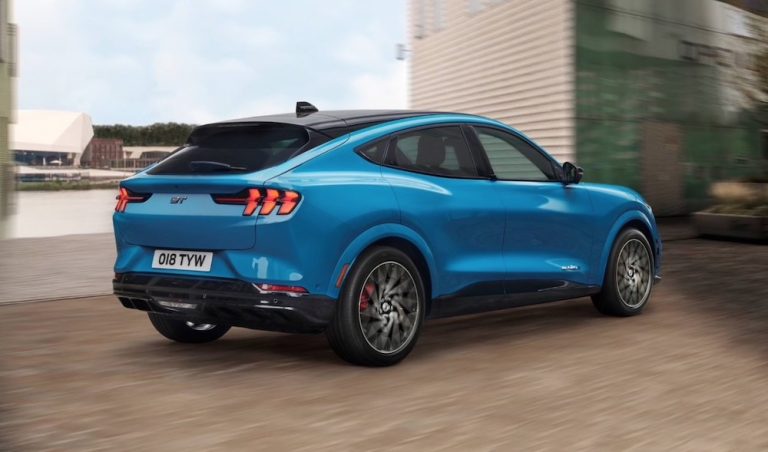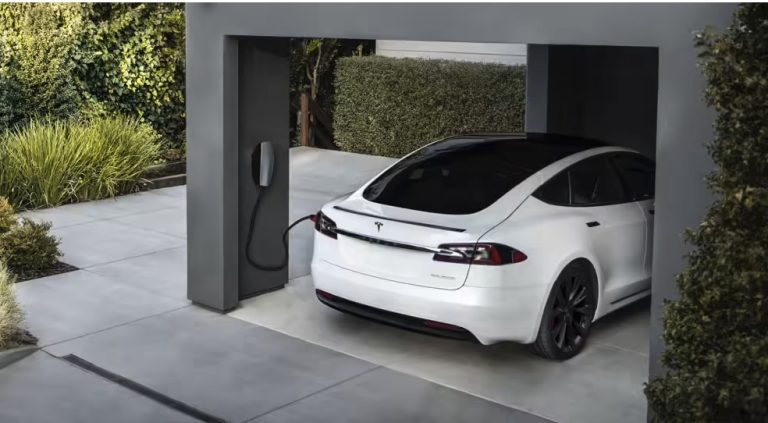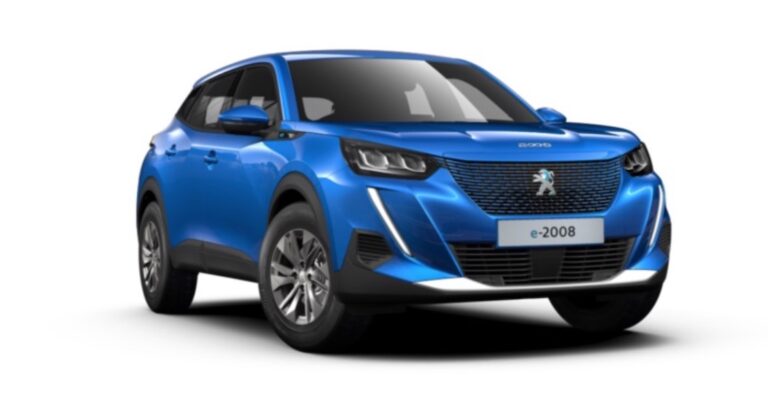Electric Cars: The Basics
For those of you new to zero-emission electric driving, we recommend a read of the following articles:
Sign up to the e-zoomed Electric Living newsletter
The Hyundai IONIQ Electric Hatchback
The Hyundai Motor Company, usually referred to simply as Hyundai, is a leading South Korean automotive manufacturer headquartered in Seoul. The company was founded in 1967, with its first model, the Cortina (in collaboration with Ford Motor Company), launched in 1968. The Cortina was assembled in the Ulsan plant in South Korea. Hyundai has come a long way since then, and currently owns a 33.88% stake in Kia Corporation, and also wholly owns the luxury automotive brand, Genesis, among others.
Hyundai has an annual production capacity of over 1.6 million units, making the automotive manufacturer the third-largest in terms of production behind the Japanese automotive manufacturer, Toyota and the German automotive group, Volkswagen. Hyundai has production facilities across a number of global locations. Some of these include: North America, India, Russia, Turkey, China and the Czech republic. Hyundai vehicles are sold in nearly 200 countries globally. The company currently has the following battery-electric vehicles (BEVs) and plug-in hybrid electric vehicles (PHEVs):
- All-electric Hyundai IONIQ
- All-electric Hyundai Kona
- All-electric Hyundai IONIQ 5
- All-electric Hyundai IONIQ 6
- All-electric Hyundai Inster
- Hyundai IONIQ Plug-In Hybrid
- Hyundai Santa Fe Plug-In Hybrid
- Hyundai Tucson Plug-In Hybrid
The Hyundai IONIQ, is the first model to be offered as a hybrid (HEV), a plug-in hybrid (PHEV) and a battery-electric vehicle (BEV). All three powertrains are offered within one body type. The variants made their debut at the Geneva Motor Show in 2016. However, the IONIQ Hybrid made its debut in South Korea in January 2016.
The pure electric Hyundai IONIQ is now only available as a used electric car, and offers much value to those keen to families keen to migrate to zero-emission electric driving, but keen on an affordable first step. The past 24 months has witnessed the growth of the used EV market, with a number of relatively good options to consider, to include the IONIQ electric.
The IONIQ EV is not going to make a bold statement and nor is it going to set the heart racing when driven. But that is not the reason to buy this family electric hatchback. The electric vehicle (EV) offers practicality and decent pure electric range.
The EV is available in one EV battery size (38.3 kWh), with a WLTP range up to 310 km. Even adjusting for real-world driving conditions, the electric car should be able to deliver over 270 km emission-free. Not bad at all and a very useful range to meet day-to-day driving needs: school runs, family outings, weekend trips, grocery shopping and a lot more!
The Hyundai electric vehicle (EV) has a 7.2 kW AC (single-phase) onboard charger. Given that most homes in Ireland are powered by a single-phase power supply, the 7.2 kW onboard charger fits perfectly. The EV can be fully charged in 6 hours via a dedicated single-phase residential EV charger. For faster charging, the EV offers DC charging up to 50 kW (10%-80%: 57 mins).
We at e-zoomed encourage a topping up approach to charging an electric car. This way charging times are shorter and regular charging is good for the maintenance of the EV battery. The automotive manufacturer offers a 8 years or 160,000 km warranty.
The front-wheel drive IONIQ electric hatchback can achieve 0-100 km/h in 10.2 seconds. The EV offers a maximum power up to 100 PS and 295 Nm torque. The top speed is 160 km/h. The electric car benefits from both, instant torque and regenerative braking.
Steering-mounted paddles adjust the regenerative braking strength. The EV offer a number of driving modes: Eco, Normal, Sport and Eco+. The Eco+ drive mode maximises vehicle range by setting a 90 km/h speed limit, switching off the air conditioning, heating, fans, and optimising regenerative braking level.
The EV also offers a number of safety features, to include: Hyundai SmartSense, forward collision-avoidance assist, lane keeping assist, blind-spot collision warning, high beam assist, lane following assist, rear cross-traffic collision warning, driver attention warning and smart cruise control. Also as standard is a 10.25″ touchscreen display. The EV offers 357 L boot space.
Bottom-line, electric driving is good for the environment and the wallet!
| PROS | CONS |
|---|---|
| An affordable family electric hatchback | Exterior styling not as exciting as more recent EVs |
| DC charging up to 50 kW | Driving will not set the heart racing |
| Decent electric range | Only available as a used electric car |
The Hyundai IONIQ Electric Hatchback (credit: Hyundai)
| At A Glance | |
|---|---|
| EV Type: | Battery-Electric Vehicle (BEV) |
| Vehicle Type: | Hatchback |
| Engine: | Electric |
| Available In Ireland: | Yes |
| Variants (1 Option) |
|---|
| Hyundai IONIQ Premium (from € 32,750) |
| EV Battery & Emissions | |
|---|---|
| EV Battery Type: | Lithium-ion |
| EV Battery Capacity: | Available in one battery size: 38.3 kWh |
| Charging: | 50 kW DC Rapid Charging (0%-80%: 57 mins). On board charger: 7.2 kW AC |
| Charge Port: | Type 2 |
| EV Cable Type: | Type 2 |
| Tailpipe Emissions: | 0g (CO2/km) |
| Battery Warranty: | 8 years or 160,000 km |
| Average Cost Of Residential Charging | |
|---|---|
| Battery net capacity: 16.7 kWh | € 4.00 |
| Battery net capacity: 30.0 kWh | € 7.19 |
| Battery net capacity: 39.2 kWh | € 9.39 |
| Battery net capacity: 45.0 kWh | € 10.78 |
| Battery net capacity: 50.0 kWh | € 11.98 |
| Battery net capacity: 64.0 kWh | € 15.34 |
| Battery net capacity: 71.0 kWh | € 17.01 |
| Battery net capacity: 77.0 kWh | € 18.45 |
| Battery net capacity: 90.0 kWh | € 21.57 |
| Battery net capacity: 100.0 kWh | € 23.97 |
- Note 1: The average cost of residential electricity in Ireland varies depending on the region, supplier and type of energy used. An average for Ireland is 23.97 cents/kWh.
- Note 2: Not all EV manufactures make available the data on net EV battery capacity, and in a number of instances the EV battery capacity advertised, does not state if it is gross or net capacity. In general, usable EV battery capacity is between 85% to 95% of the gross available capacity.
| Charging Times (Overview) | |
|---|---|
| Slow charging AC (3 kW – 3.6 kW): | 6 – 12 hours (dependent on size of EV battery & SOC) |
| Fast charging AC (7 kW – 22 kW): | 3 – 8 hours (dependent on size of EV battery & SoC) |
| Rapid charging AC (43 kW): | 0-80%: 20 mins to 60 mins (dependent on size of EV battery & SoC) |
| Rapid charging DC (50 kW+): | 0-80%: 20 mins to 60 mins (dependent on size of EV battery & SoC) |
| Ultra rapid charging DC (150 kW+): | 0-80% : 20 mins to 40 mins (dependent on size of EV battery & SoC) |
| Tesla Supercharger (120 kW – 250 kW): | 0-80%: up to 25 mins (dependent on size of EV battery & SoC) |
- Note 1: SoC: state of charge
| Dimensions | |
|---|---|
| Height (mm): | 1475 |
| Width (mm): | 1820 |
| Length (mm): | 4470 |
| Wheelbase (mm): | 2700 |
| Turning Circle (m): | N/A |
| Cargo Volume (L): | 455 |
| IONIQ Electric Premium | |
|---|---|
| EV Battery Capacity: | 38.3 kWh |
| Pure Electric Range (WLTP): | 310 km |
| Electric Energy Consumption (kWh/100km): | 13.8 |
| Charging: | 50 kW DC Rapid Charging (0%-80%: 57 mins). On board charger: 7.2 kW AC |
| Top Speed: | 160 km/h |
| 0-100 km/h: | 10.2 seconds |
| Drive: | Front-wheel drive (FWD) |
| Electric Motor (kW): | 136 |
| Max Power (PS): | 100 |
| Torque (Nm): | 295 |
| Transmission: | Automatic |
| Seats: | 5 |
| Doors: | 5 |
| Kerb Weight (kg): | 1,527 – 1,575 |
| Colours: | 9 |
| NCAP Safety Rating: | N/A |
Top Reasons To Buy An Electric Vehicle (EV)
Never have the reasons to buy an electric car been more compelling, than 2022. The past decade has witnessed a significant maturity of all types of electric vehicles (EVs), to include, battery-electric vehicles (BEVs) and plug-in hybrid electric vehicles (PHEVs). A BEV, also known as a pure electric car, is propelled using energy stored in an EV battery via an electric motor. While a PHEV uses ‘hybrid technology’, to include, an internal combustion engine (ICE) and an electric motor, to propel the vehicle.
One of the primary differences between a BEV and a PHEV, is that, a pure electric car, like the best-selling Tesla Model 3, has a much longer zero-tailpipe emission electric range, compared to a plug-in hybrid electric car, like the Toyota Prius PHEV. The reason is simple: a BEV has a much larger onboard EV battery. In general, the latest BEVs have a zero-emission range between 150 to 400 kms, while PHEVs average closer to 50 kms. Given the significant increase in electric range, improvement in EV charging infrastructure and attractive government grants, BEVs are fast becoming the preferred type of electric vehicle to own!
| Top Reasons To Buy An Electric Vehicle (EV) |
|---|
| Lower tailpipe emissions and lower air pollution i.e. improves air quality in the immediate area. |
| Significantly cheaper to recharge a full EV battery, compared to filling a full tank of petrol/ diesel. An EV battery can be charged for as little as €10, while filling a tank of fuel is over €100! |
| Cheaper to drive per km, compared to an internal combustion engine petrol/ diesel car. An EV costs less than 5 cents per km to drive. |
| Lower maintenance costs, compared to an internal combustion engine petrol/ diesel car. Pure electric cars have fewer moving parts, so less can go wrong! |
| Lower noise pollution, compared to an internal combustion engine petrol/ diesel car. Noise pollution is as detrimental on health, as air pollution! |
| A vast range of fantastic EV available on sale, for all budgets and aspirations. EVs have come a long way since the introduction of the first generation all-electric Nissan Leaf in 2010. |
| Attractive government subsidies to support the uptake of electric cars. Take advantage while still available. |
While e-zoomed uses reasonable efforts to provide accurate and up-to-date information, some of the information provided is gathered from third parties and has not been independently verified by e-zoomed. While the information from the third party sources is believed to be reliable, no warranty, express or implied, is made by e-zoomed regarding the accuracy, adequacy, completeness, legality, reliability or usefulness of any information. This disclaimer applies to both isolated and aggregate uses of this information.






























